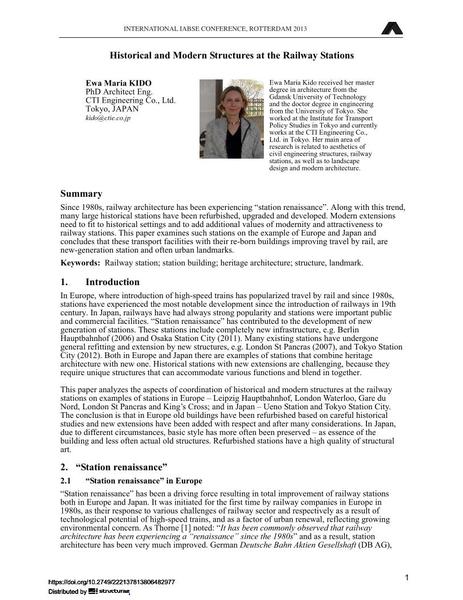Historical and Modern Structures at the Railway Stations

|
|
|||||||||||
Détails bibliographiques
| Auteur(s): |
Ewa Maria Kido
|
||||
|---|---|---|---|---|---|
| Médium: | papier de conférence | ||||
| Langue(s): | anglais | ||||
| Conférence: | IABSE Conference: Assessment, Upgrading and Refurbishment of Infrastructures, Rotterdam, The Netherlands, 6-8 May 2013 | ||||
| Publié dans: | IABSE Conference, Rotterdam, May 2013 | ||||
|
|||||
| Page(s): | 198-199 | ||||
| Nombre total de pages (du PDF): | 8 | ||||
| Année: | 2013 | ||||
| DOI: | 10.2749/222137813806482977 | ||||
| Abstrait: |
Since 1980s, railway architecture has been experiencing “station renaissance”. Along with this trend, many large historical stations have been refurbished, upgraded and developed. Modern extensions need to fit to historical settings and to add additional values of modernity and attractiveness to railway stations. This paper examines such stations on the example of Europe and Japan and concludes that these transport facilities with their re-born buildings improving travel by rail, are new-generation station and often urban landmarks. |
||||
| Mots-clé: |
structure
|
||||
